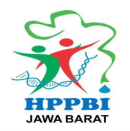Environmental Literacy Profile Analysis of Middle School Students in Science Learning
DOI:
https://doi.org/10.37150/rebion.v3i1.1608Abstract
Background: This paper aims to obtain an overview of students' environmental literacy. This research was conducted in Purwakarta Regency, one of the central industrial areas in West Java. Measurement of scientific literacy profile by adapting the standard assessment instrument of the Middle School Environmental Literacy Survey (MSELS). Methods: The test instruments that have been developed cover several aspects of environmental literacy, including knowledge, cognitive skills, environmentally conscious attitudes, and environmentally responsible behavior. The sample used was 100 students from three public high schools in Purwakarta district. The test instruments that have been developed cover several aspects of environmental literacy, including knowledge, cognitive skills, environmentally conscious attitudes, and environmentally responsible behavior. In addition to tests, interviews were also conducted to assist researchers in supporting the data that had been obtained. Results: The research shows that the results of the calculation of the average value of environmental literacy show that students' environmental literacy is at 45%, which is in the sufficient criteria. If it is narrowed down to environmental literacy indicators, we get different average values, namely ecological knowledge of 7.91% (sufficient criteria), cognitive skills of 6.05% (less criteria), environmental awareness of 67.08% (good criteria,) and environmentally responsible behavior of 77.89% (good criteria).
Keywords : environmental literacy; environmental knowledge; attitude towards the environment; environmentally responsible behavior; (MSELS)
Downloads
Published
How to Cite
Issue
Section
License
Copyright (c) 2022 Report of Biological Education

This work is licensed under a Creative Commons Attribution-NonCommercial-ShareAlike 4.0 International License.










